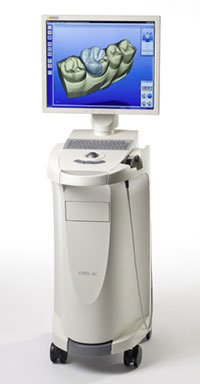ClearCorrect is a clear braces system used as an effective alternative to conventional braces to straighten crooked teeth. Like other clear braces systems (such as Invisalign} available only to dentists or orthodontics certified to provide them to patients, ClearCorrect aligns teeth by using a series of clear, plastic-sealed aligners which gradually move teeth towards each other over some time. This method is designed to straighten teeth while maintaining their alignment and natural curvature gradually. Unlike Invisalign, Clear Corrections do not necessitate oral surgery.
 There are several advantages to using DentalExcellence ClearCorrect over braces, with the most obvious one being its cost-effectiveness. Clear Corrections are much cheaper than braces, which can easily run into thousands of dollars per treatment! The fact that clearcorrect does not need to be removed daily also reduces the time spent in wearing braces and the number of materials, which would otherwise have to be used. ClearCorrect offers an economical alternative to orthodontic treatments for families with tight budget restrictions, particularly for individuals with extensive orthodontic conditions such as overbites, underbites, crossbites, and multiple overbites.
There are several advantages to using DentalExcellence ClearCorrect over braces, with the most obvious one being its cost-effectiveness. Clear Corrections are much cheaper than braces, which can easily run into thousands of dollars per treatment! The fact that clearcorrect does not need to be removed daily also reduces the time spent in wearing braces and the number of materials, which would otherwise have to be used. ClearCorrect offers an economical alternative to orthodontic treatments for families with tight budget restrictions, particularly for individuals with extensive orthodontic conditions such as overbites, underbites, crossbites, and multiple overbites.
One disadvantage to the clear aligners is that they can be uncomfortable. In general, their design leaves some parts of the mouth feeling sore after extended use. It is not an issue when mainly treating minor orthodontic conditions; however, for more severe conditions, especially those resulting from teeth positioning problems, they can be extremely painful. Some users have reported that they feel “burned” or even “acidic” after spending extended periods in the clear corrective braces, even though no acids were used during the fitting process. Also, many users have commented that while the metal braces themselves are not very painful, the metal rubbing against the teeth does make them a little uncomfortable, as though some sort of electric current was applied.
Another disadvantage of the clearcorrect system is that it requires patients to continuously wear Clear Corrections for six to eight weeks before returning to normal activities. While clearer Corrections can stay in their places for this length of time, some may need to be taken out slightly sooner than others. It is not usually an issue with some braces, but the overuse of braces may weaken the adhesive bond between the Clear Corrections and the aligners over time, causing them to fall out. Also, with some of the newer aligners, it is harder for the Clear Corrections to stick to the aligners once they are removed, making their removal a bit trickier (and therefore slightly more expensive).
DentalExcellence ClearCorrect also offer another option to patients who want less invasive orthodontic procedures performed on their teeth. This method is the uses clear aligners called Invisalign. These aligners are completely removable and have been shown to be as effective at correcting dental misalignment problems as traditional braces are. However, with an emphasis on technology over beauty, these newer aligners have become somewhat of a fashion statement. They are seen more often in celebrity mouths than in those of normal teeth.
Whether you choose Clear Corrections or Invisalign as your treatment option, you should do so because they are less invasive and have minimal health risks or complications. Clear Corrections has less treatment time than traditional braces and requires less maintenance than Invisalign. When it comes to the health benefits of either choice, there is not enough data to assess. For more information, talk to your family doctor or dentist. They are best able to inform you about the pros and cons of each treatment option.